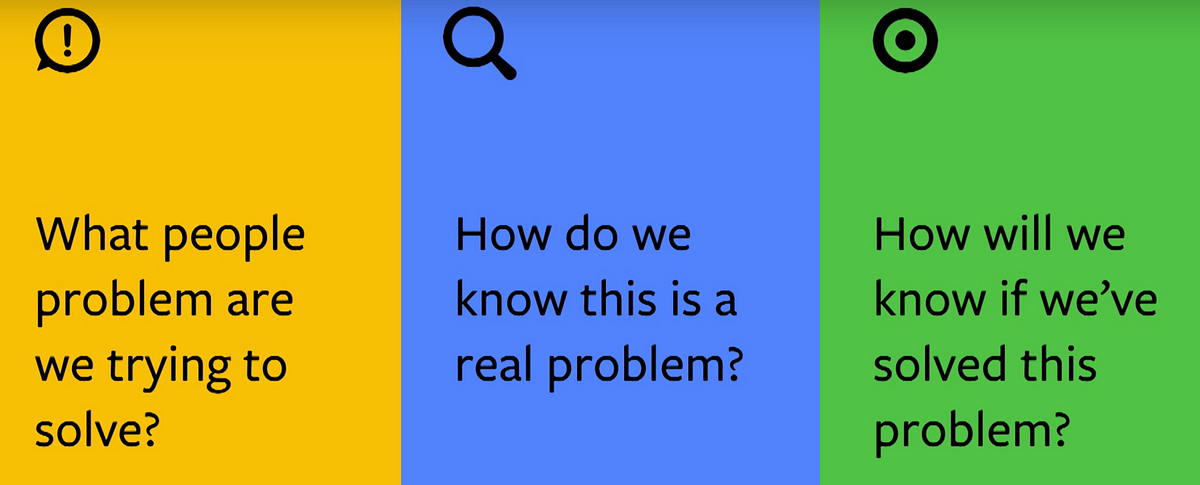
The Three Questions Facebook Uses To Guide Their Product Development
The provided text explores the importance of defining and understanding user problems before developing solutions. It emphasizes the need for a clear problem statement that is human-centric, solution-agnostic, and addresses the underlying "why" behind the issue. The example of Facebook Groups highlights the importance of qualitative and quantitative evidence to validate the problem's existence. Anecdotal stories and data analysis revealed a significant need for group discovery features.
Furthermore, the text stresses the significance of setting measurable goals and metrics before launching a solution. This allows for unbiased evaluation of the product's impact and ensures that the problem is effectively addressed. The Facebook Group Discover team used metrics like user engagement in groups to assess the effectiveness of their solution.
Question 1 — What people problem are we trying to solve?
A good problem statement contains the following elements:
- Human, simple and straightforward — avoids any technical or company jargon
- Solutions agnostic
- Not about the company winning
- Gets at the why
- Functional, emotional or social
Facebook example — “I want to talk about an interest with other people who are also interested, but I don’t know where to find these people”
Question 2— How do we know this is a real problem?
What evidence is there — qualitative and quantitative — that this is a problem worth solving? Knowing how big a problem is helps to prioritize your product efforts.
Facebook example — Over 1/3 of new group memberships came from a simple “Groups you should join” card in the newsfeed. Anecdotal stories from school reunions of classmates not being aware of groups for organizing events and activities. This led the team to believe that this was a real problem around group discovery and eventually led to them building a solution to address this.
Question 3— How will we know if we’ve solved this problem?
Set measurable goals, metrics, and milestones before launching anything to users. This is to reduce bias in evaluating the results and impact of your product.
Facebook example — The Group Discover team set goals around helping users find new groups (more users joining groups) but were also interested in making sure users were joining the right groups. To measure this they tracked the user’s activity in the group over a period of a few months.